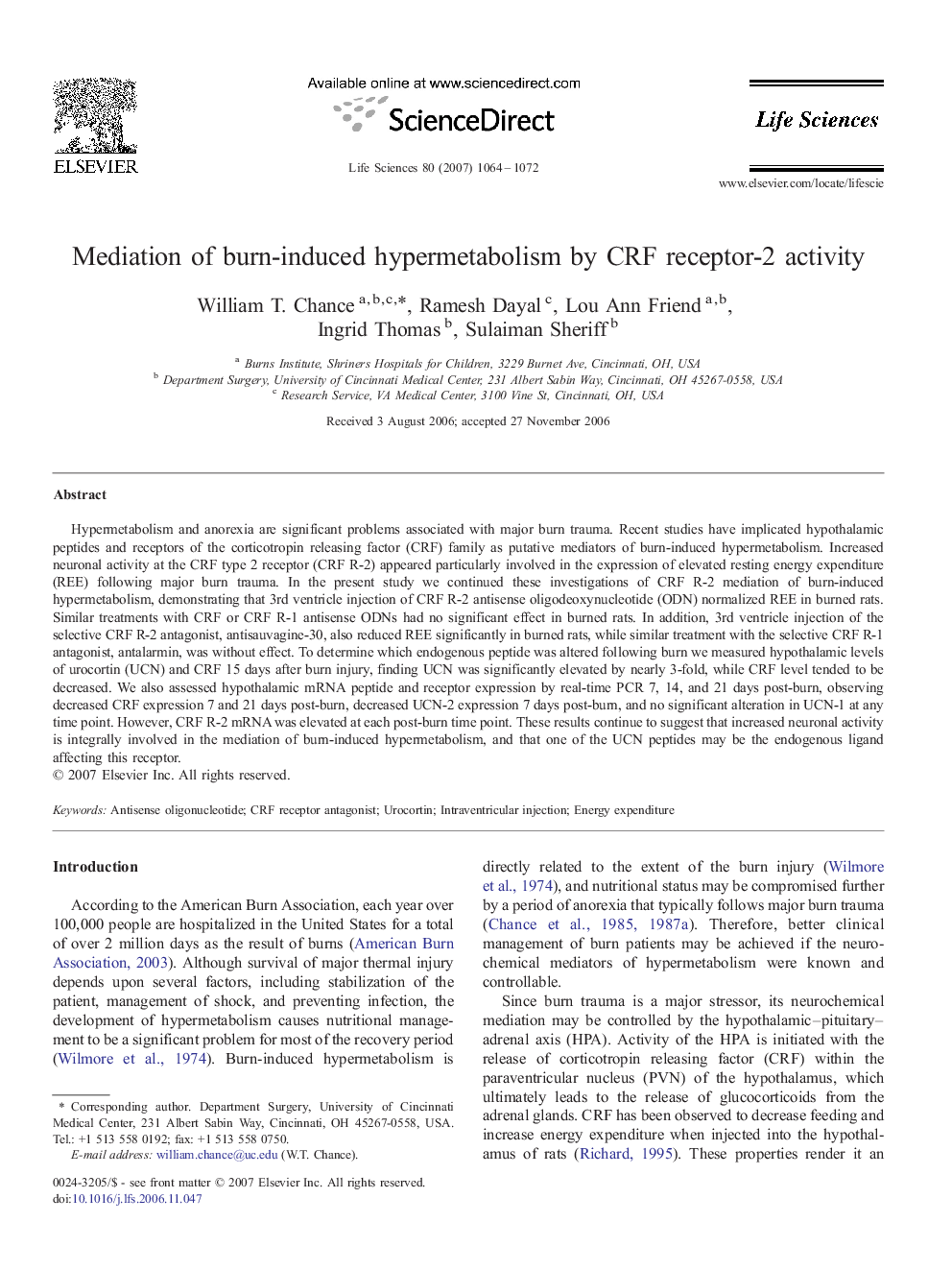| کد مقاله | کد نشریه | سال انتشار | مقاله انگلیسی | نسخه تمام متن |
|---|---|---|---|---|
| 2553661 | 1124917 | 2007 | 9 صفحه PDF | دانلود رایگان |
عنوان انگلیسی مقاله ISI
Mediation of burn-induced hypermetabolism by CRF receptor-2 activity
دانلود مقاله + سفارش ترجمه
دانلود مقاله ISI انگلیسی
رایگان برای ایرانیان
کلمات کلیدی
موضوعات مرتبط
علوم پزشکی و سلامت
پزشکی و دندانپزشکی
کاردیولوژی و پزشکی قلب و عروق
پیش نمایش صفحه اول مقاله

چکیده انگلیسی
Hypermetabolism and anorexia are significant problems associated with major burn trauma. Recent studies have implicated hypothalamic peptides and receptors of the corticotropin releasing factor (CRF) family as putative mediators of burn-induced hypermetabolism. Increased neuronal activity at the CRF type 2 receptor (CRF R-2) appeared particularly involved in the expression of elevated resting energy expenditure (REE) following major burn trauma. In the present study we continued these investigations of CRF R-2 mediation of burn-induced hypermetabolism, demonstrating that 3rd ventricle injection of CRF R-2 antisense oligodeoxynucleotide (ODN) normalized REE in burned rats. Similar treatments with CRF or CRF R-1 antisense ODNs had no significant effect in burned rats. In addition, 3rd ventricle injection of the selective CRF R-2 antagonist, antisauvagine-30, also reduced REE significantly in burned rats, while similar treatment with the selective CRF R-1 antagonist, antalarmin, was without effect. To determine which endogenous peptide was altered following burn we measured hypothalamic levels of urocortin (UCN) and CRF 15Â days after burn injury, finding UCN was significantly elevated by nearly 3-fold, while CRF level tended to be decreased. We also assessed hypothalamic mRNA peptide and receptor expression by real-time PCR 7, 14, and 21Â days post-burn, observing decreased CRF expression 7 and 21Â days post-burn, decreased UCN-2 expression 7Â days post-burn, and no significant alteration in UCN-1 at any time point. However, CRF R-2 mRNA was elevated at each post-burn time point. These results continue to suggest that increased neuronal activity is integrally involved in the mediation of burn-induced hypermetabolism, and that one of the UCN peptides may be the endogenous ligand affecting this receptor.
ناشر
Database: Elsevier - ScienceDirect (ساینس دایرکت)
Journal: Life Sciences - Volume 80, Issue 11, 20 February 2007, Pages 1064-1072
Journal: Life Sciences - Volume 80, Issue 11, 20 February 2007, Pages 1064-1072
نویسندگان
William T. Chance, Ramesh Dayal, Lou Ann Friend, Ingrid Thomas, Sulaiman Sheriff,